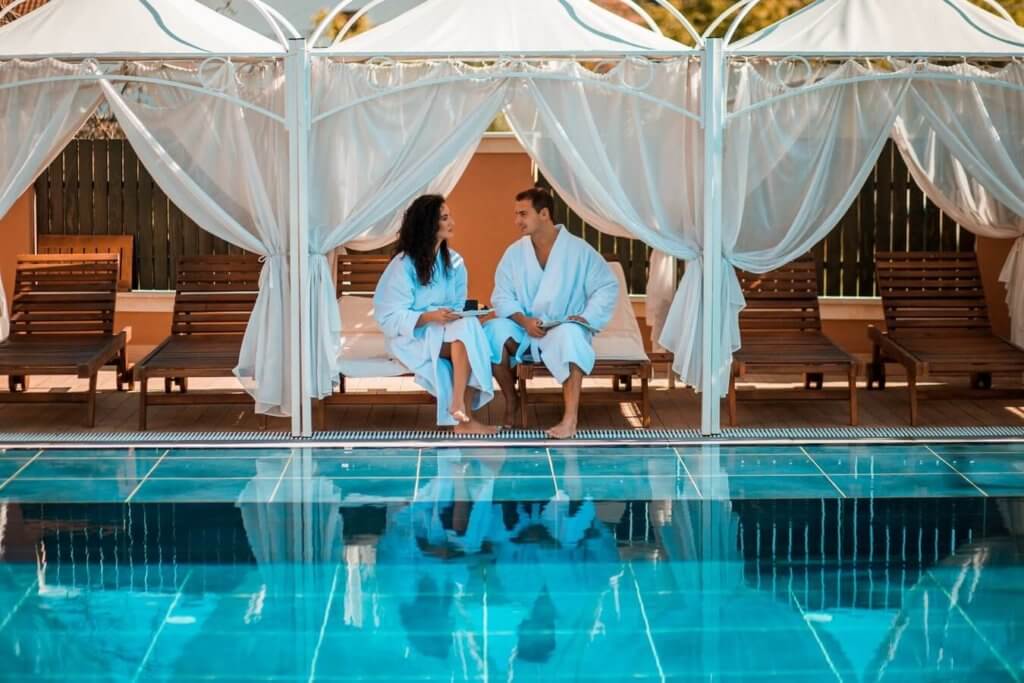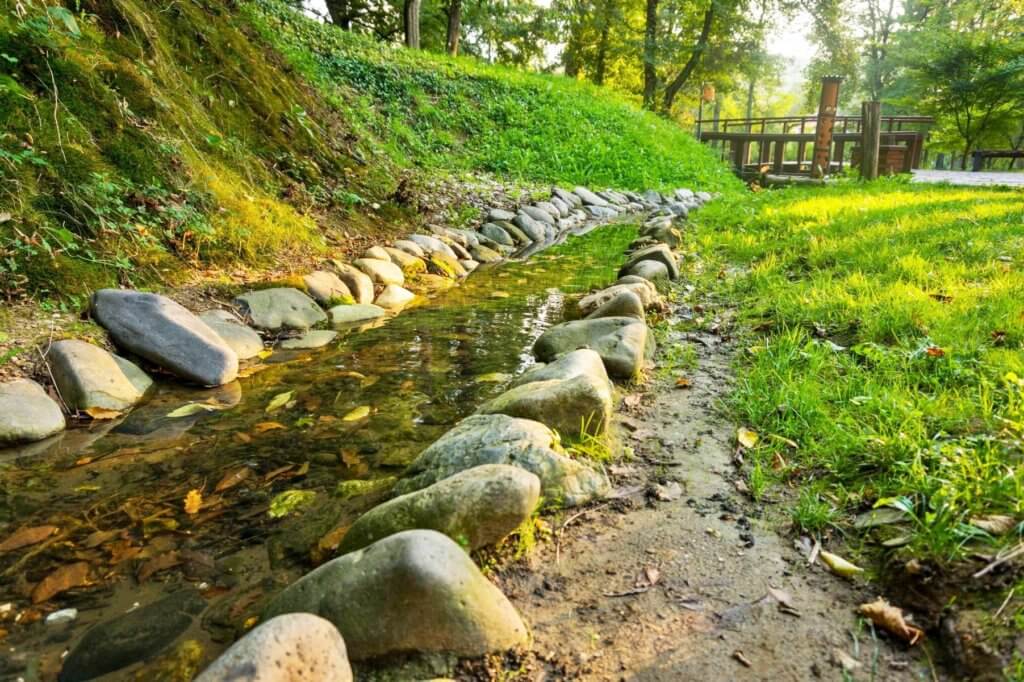Vrnjačka Banja spa is the largest and the most famous resort in Serbia and traditionally attractive tourist destination for recreation. It is situated in central Serbia, 200 km from Belgrade. Vrnjačka Banja spa has a long tradition of convalescence. It owes its reputation to its therapeutic effects known already to the Roman troops in the second century AD. It was upgraded by the Chech Baron Herder in 1835 after Prince Miloš Obrenović wanted it to be like Karlovy Vary, it has since received people from all of southern Europe, who came to rest or for treatment. With organized walks along the tree-bordered paths, Vrnjačka Spa is an ideal place to come to for one’s own salvation. Natural springs can be found on five mineral water sources well positioned in the park. The warm water (36 degrees Celsius) is ideal for massage, and cool (17 degrees Celsius) sufficiently reviving.
There are seven different mineral spas with healing properties
Those are Topla Voda (Warm Water – the oldest thermal spring in Vrnjačka Banja from the prehistoric times) Slatina, Snežnik, Jezero, Beli izvor, Borjak, Vrnjačko vrelo.
Mineral waters of Vrnjačka Banja Spa treat numerous diseases, such as:
- diabetes mellitus (type 1 diabetes, type 2 and complications)
- condition after lumbar jaundice
- diseases of the gallbladder and bile ducts
- pancreatic diseases
- gastric ulcer and duodenal ulcer
- non-infectious diseases of the small and small intestine
- diseases of the digestive system
- condition after surgical removal of the gallbladder
- conditions after resection of esophagus, stomach, and intestine
- chronic gynecological diseases and sterility
- infections of the kidney pelvis, urinary bladder, and urinary tract
- calculus of the urinary tract and functional diseases
- rheumatic diseases
- posttraumatic conditions
The climate here is continental. During the summer, mornings and evenings are fresh due to the wind blowing from the Goč Mountains to the Western Morava, and the winters with plenty of snow and no major frosts. The average summer temperature is about 20° C. During the year, it is moderately cloudy, with the highest precipitation during June and October, while in September it has the least atmospheric precipitation.
In winter, it is convenient for skiing on the Goč, just a few kilometers away.
Thanks to the hills surrounding the spa, winds are weak, even 170 days of the year without wind. Due to its climate, position, and medicinal qualities, tourism has always been attractive in this area.
Numerous Resorts
In recent years, apart from the health of the Vrnjačka Spa, it has been delayed due to an active holiday. Hotels are numerous and have swimming pools and halls for games. If you are looking for different, modern kinds of spa tourism, you will find some of the best wellness centers placed in great hotels.

Vrnjacka Banja spa Solaris Resort
Near the spa is West Morava river, with arranged places for fishing, where fishing manifestations are held. The younger guest that are coming in Vrnjačka Banj Spa enjoys in numerous sports activities on tennis, baseball, basketball, volleyball, football fields.
Summer events
In the summer, Vrnjačka Banja is transformed into one of the largest cultural centers in Serbia especially in the time of Karneval.
It is the time of the year when is visited the most and this manifestation attracts people from Serbia and abroad to enjoy in festivals, concerts, theatre plays. The central event is a famous Karneval walk.
Most beautiful parks
The restaurants are often on the border of water and offer terraces under the trees of the park. Another symbol of the town is famous Banja Park, which is spreading from the Love Bridge and all along the Vrnjačka River. It was built since 1888 but has been reorganized several times and during the years he has grown and developed. A 2 km long walkway, which is protected by linden trees, a Japanese garden conjure up vegetation and lifestyle in Japan, low ornamental plants, but also sculptures by local and foreign authors make the park a symbol of Vrnjačka Banja.

Vrnjačka Banja park photo by Dimic Bata
This is truly a place that has it all. Source of health, places for fun, wealthy cultural life, rich history. And place, where long history always is some beautiful legend.
This is one of them.
Bridge of love
In the wake of World War II, while the war did not even dream, one young couple, the teacher Nada (Hope) and Serbian officer Relja fell in love. It was love that everyone was talking about, which captivated the attention of all people from Vrnjačka spa. But the war came with all the horrors that entail. Serbian officer Relja went to war in Greece. He never came back because of the beautiful Greek woman whom he falls in love and after that, he breaks off the engagement with Nada. About his further destiny legend does not say anything, but we all know the fate of lady Nada. Due to overwhelming sorrow, she melts away each day and finally died, young and unhappy.
Girls Upset by Nada’s fate, wishing to keep their love, on locks write their names and the names of their sweethearts and tied to the railing of a bridge that was a favorite meeting place of Nada and a Relja and keys are symbolically thrown into the river. There were new wars and suffering. The story was forgotten and the custom of girls to tie their love has become forgotten. The situation was like that until Desanka Maksimović, one of the famous Serbian poet, didn’t hear the stories from old residents, about this tragic destiny and inspired by them wrote one of her most beautiful love songs: Prayer for Love. Although we tend to oblivion this story is not forgotten, and to extend its life, young couples have continued the tradition of tying their love, and the bridge named Bridge of love.
Among the other sights is Gočko the Sparrow – monument, statue and city symbol. Belimarković castle situated right beside Warm Water spring with its specific architecture style, Japanese garden, and Vrnjačka Banja tourist train.